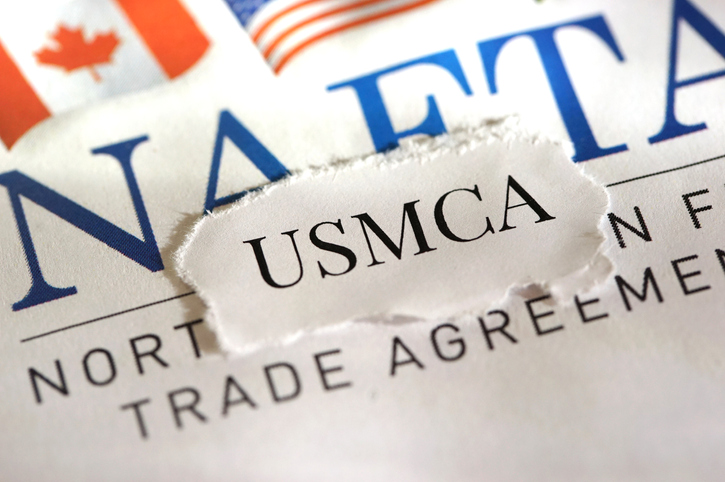In today’s rapidly changing global economy, companies need every advantage to remain competitive. The ongoing trade war with China and the Trump administration’s application of wide-sweeping tariffs have businesses rethinking their global footprint, and Mexico is proving to be a strategic base for many multinational organizations. Having manufacturing, ecommerce, order fulfillment, or other types of businesses based in Mexico provides a powerful combination of speed, cost efficiency, and trade advantages, especially for accessing the lucrative U.S. market.
Before preparing this article, I spoke with one of our clients, Krieger Worldwide. Krieger Worldwide is a global freight forwarder and customs brokerage firm based in Los Angeles. We have supported Krieger Worldwide with key talent throughout the past 20 years, so I reached out to some of leadership for some input and reference material for this article.

1. Proximity to the U.S. Enables Faster Time to Market
One of Mexico’s most compelling advantages is geographic proximity. With a shared border and extensive transportation infrastructure—highways, railways, and ports—Mexico offers unparalleled logistical efficiency for shipments to the US. The proximity drastically reduces lead times compared to sourcing from Asia or Europe. In industries where product cycles are short and speed is critical, this can mean the difference between capturing market share and missing out.
For instance, manufacturers in the automotive, aerospace, building materials, electronics, and FMCG sectors can produce and deliver products to US distribution centers in a matter of days rather than weeks. This agility enables faster response to market demand, easier inventory management, and improved customer satisfaction.
Scott Attwood, Krieger Worldwide’s Vice President of Operations, says, “We see in real time the advantage of our manufacturing clients in Mexico delivering finished goods across the US/Mexico border without the same service interruptions that overseas manufacturers are seeing due to blank sailings, capacity challenges, or increased tariffs amid trade regulatory changes. Time is of the essence when preserving shelf-space to stay top of mind with the consumer. For manufacturers of consumer products, producing in Mexico allows a quick response to changing styles, colors, and trends.”

2. Tariff Relief Through the USMCA Agreement
Mexico’s participation in the United States-Mexico-Canada Agreement (USMCA) provides companies with significant trade advantages. Under the USMCA, many goods manufactured in Mexico and exported to the U.S. qualify for reduced or zero tariffs, provided they meet rules of origin and compliance requirements.
Gerri Williams, Trade Advisory Manager for global logistics provider Krieger Worldwide, explains that when importing from Mexico under USMCA provisions, not only are many goods eligible for preferential or duty-free treatment, but importers also benefit from lower financial exposure tied to US Customs bonds. Importing goods from Mexico to the US under USMCA provisions is likely to result in reduced bond utilization for importers compared to importing from other countries with higher tariffs. This reduced bond utilization means importers may avoid increases in bond amounts (and associated surety costs) that are common with imports from high-tariff countries. In effect, the cost savings compound from tariffs, to bond management, to cash flow implications.
For companies importing at scale, these “hidden” financial efficiencies can become significant over time. It’s certainly worth including in the cost-benefit analysis when evaluating nearshoring strategies.
This tariff relief translates into tangible cost savings, especially for companies that have previously faced heavy import duties under Section 301 or other trade actions when sourcing from China or different regions. Shifting production to Mexico not only avoids these tariffs but also ensures pricing stability and predictability in cross-border trade.

3. Robust Manufacturing Ecosystem and Skilled Labor
Mexico has a well-established manufacturing base supported by skilled labor, modern facilities, and growing innovation hubs. Sectors such as aerospace, automotive, medical devices, electronics, and textiles have flourished thanks to decades of foreign direct investment and industrial policy support.
Companies that establish operations in Mexico can leverage existing supply chains and vendor networks, thereby reducing setup costs and operational risks. The ability to scale up production quickly, while maintaining quality standards, adds another layer of speed and efficiency for businesses targeting the U.S. market.
4. Cost Competitiveness and Operational Flexibility
Compared to many other nearshore or offshore options, Mexico offers a strong balance of affordability and performance. Labor costs are significantly lower than in the U.S., yet productivity remains high in many sectors. Furthermore, companies benefit from reduced transportation costs, shorter transit times, and lower inventory holding requirements due to just-in-time capabilities.
Robert Krieger, CEO of Krieger Worldwide, said, “Producing some products in Mexico allows manufacturers to produce a broader price range of products, with some produced in low-cost regions of Asia or Africa, and some produced in slightly higher-cost areas such as Mexico. In some instances, this flexibility is completely reversed. For example, a company can produce a relatively low-value-added product in Mexico that is imported into the US at a relatively low cost, while a more technologically advanced, higher-value product produced in China may appear to have a high duty profile and would likely appeal to higher-end buyers.
Another essential aspect to highlight is the strategic advantage of US logistics providers like ourselves, positioned along the U.S.–Mexico border. Many of these companies are well-equipped to move goods in bond from U.S. ports directly into Mexico, allowing importers to avoid unnecessary U.S. duties on materials that are only transiting the U.S. enroute to Mexican manufacturing facilities.”
This bonded movement not only preserves cash flow by deferring or eliminating duties, but it also ensures that critical materials continue to flow uninterrupted to production lines in Mexico. With the right partners in place, this process can be both compliant and highly efficient, further strengthening the case for nearshoring and optimizing cross-border supply chains.
This cost-effective operating environment enables companies to respond dynamically to changes in demand and shifting economic conditions, which is essential in an era of global supply chain disruptions.
5. Regulatory and Infrastructure Support
The Mexican government continues to invest in infrastructure improvements, industrial parks, and regulatory frameworks that support international business. Free trade zones, tax incentives, and simplified customs processes further enhance Mexico’s attractiveness as a manufacturing and distribution hub for the US.

Conclusion
Establishing a footprint in Mexico is not just a tactical move—it’s a strategic imperative for companies that need to accelerate their go-to-market strategies while controlling costs and mitigating trade risks. With its proximity to the U.S., access to tariff relief through the USMCA, a skilled workforce, and a developed industrial ecosystem, Mexico offers a reliable and efficient launchpad for product expansion into the United States. For businesses aiming to compete on speed, cost, and compliance, Mexico is not just a neighbor—it’s a vital gateway to the North American market.
– Carlos Acosta

Based in San Diego, California, Carlos Acosta is a Senior Managing Partner and the Practice Leader of The QualiFind Group. He has led and managed a broad range of challenging recruiting assignments throughout the US, almost every state in Mexico, and other parts of Latin America.
Representative searches for Carlos include general management, director, functional management, supervisory, and individual contributor roles. He has also led and managed complex recruitment projects for clients undertaking greenfield, brownfield, expansion, or turnaround operations.
Carlos has dual citizenship in both the US and Mexico and brings a bicultural approach to leading and managing the highest performing recruitment and research team delivering strategic talent in service to this multicultural market.
Contact Carlos at:
619.240.2638
cacosta@qualifindgroup.com

